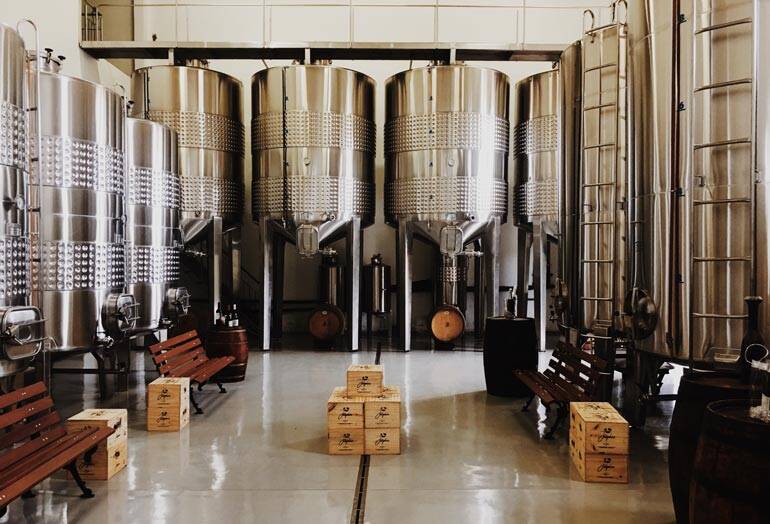Start 14-Day Trial Subscription
*No credit card required

The Brewing Trends Shaping the Craft Beer Industry
Discover the latest trends shaping the independent brewery industry in 2023. Despite post-pandemic challenges, the craft segment remains resilient.
Independent breweries have endured significant shifts in the aftermath of the pandemic due to the markedly decreased sales during the lockdown period, as well as the tough economic inflation that followed. Steep inflation levels and raising prices have increased the cost of raw materials used in production, which, combined with the elevated consumer prices has led to many businesses ceasing all operations. Yet, the craft industry segment remains robust and is determined to succeed.
And since each year brings new trends to the industry, let’s examine some of those guaranteed to influence the market in 2023.
Sector expansion
In the wake of the pandemic, businesses, regardless of the industry sector in which they operate, have sought to expand their reach, branch out and revamp themselves. The difficult years have led to many businesses seeking ways to elevate themselves. Companies have become aware that craft beer is becoming increasingly more visible among the general public, and more consumers want to try it out.
As a result, a wider range of beverages is expected to become available in restaurants and on store shelves that can meet the requirements of the market. Premiumization is also becoming increasingly more important, and the trend has long stopped being reserved for a minority of the products, having become a widespread requirement.
Higher quality
Since prices are on the rise, consumers are also expecting a higher quality level and improved customer experience. Quality differences will be a likely denominator that will set apart the breweries that will succeed from those that won't. If you’re a producer, you want to make sure the products you deliver are the best they could possibly be – no matter how big or small your operation is.
Doing so means that you have to take care of every aspect of the finished product, including the stability, aging and deterioration processes, as well as the freshness of the ingredients and the overall manufacturing conditions. Even water, the most basic ingredient, plays a crucial role in how beer tastes. To learn more about all these intricacies, enroll in a Chemistry course where you can learn more about the ion species present in water and how they can affect the metabolic pathways of the yeast. As one of the most fundamental aspects of beer production, this aspect can deeply affect flavoring.
Using analytical instruments, researchers have discovered that the average beer contains nearly 8,000 chemical compounds. The beer-making process is understandably very complex, and a lot of work and creativity goes into making a premium beer.
Brand new styles
No market trend analysis would be complete without mentioning the several new styles that are guaranteed to get the most hype this year. One of the most popular is beers with CBD. Touted by many as a miracle ingredient able to help individuals dealing with chronic inflammation, chronic pain, anxiety and sleep troubles, it has been added to numerous products, from foods to toothpaste. CBD is an incredible alternative ingredient since its effects are much milder compared to those of other plant compounds.
Rosé beers are also one of the biggest innovations keeping consumers on their toes this year. A relatively recent addition to the craft world, this newcomer has created quite a bit of buzz at first glance due to its particular coloring.
And since new hues are entering the beer market, it’s also important to mention a newfound interest in different tastes. Sour beers are expected to continue their popularity in 2023. While certainly an acquired taste, acidic or tart beer styles are enjoying renewed popularity, and a growing number of fans are opting for them. If you’re just getting used to this style, you can opt for sour beers with lighter, fruit-based touches rather than a full-on sourness with no additives to prop it up. These are the types of beers that are also likely to attract the public that typically enjoys wines and cocktails.
Macro-brewery opposition
Competition between businesses operating within the same industry sector is common, but competition between smaller and larger establishments can be considerably challenging for medium-sized enterprises. While the craft beer market has largely stabilized, it might be that this trend won’t endure long this year, as large producers are expected to put up fierce opposition. Macro corporations produce over six million gallons of beer every year. A microbrewery manufactures around 15,000 barrels or less, while taproom breweries only sell around 5,000 barrels each year.
The competition from macro brewers also comes as a result of craft steadily becoming an older market, which removes some of its allure for a particular subtype of customers that’s constantly looking to experience novelty in the products they buy. As the market becomes steadily more normalized and more easily accessible for everyone, it will also be more visible in establishments, leading to consumers no longer gravitating chiefly towards the smaller brands.
As a result, the larger companies, which possess a considerable amount of resources compared to smaller establishments, will start creating their own craft-style beers, potentially impacting the artisanal market.
Big changes
The cultivation of hops, a bittering, stability and flavoring agent in beer responsible for creating different aromas in beverages, has continuously increased in the United States since 2012. This means that beers are more likely to be produced with fresher ingredients and have a better flavor that customers will appreciate.
Non-alcoholic craft beers have also become more popular in the craft market, creating an opening for more variety and encouraging further production efforts.
This year is crucial for the development of the craft sector. Coexisting with large producers will be one of the most challenging tasks, and if the market can withstand it, it will certainly have a successful future. And, as always, remember to drink responsibly.



